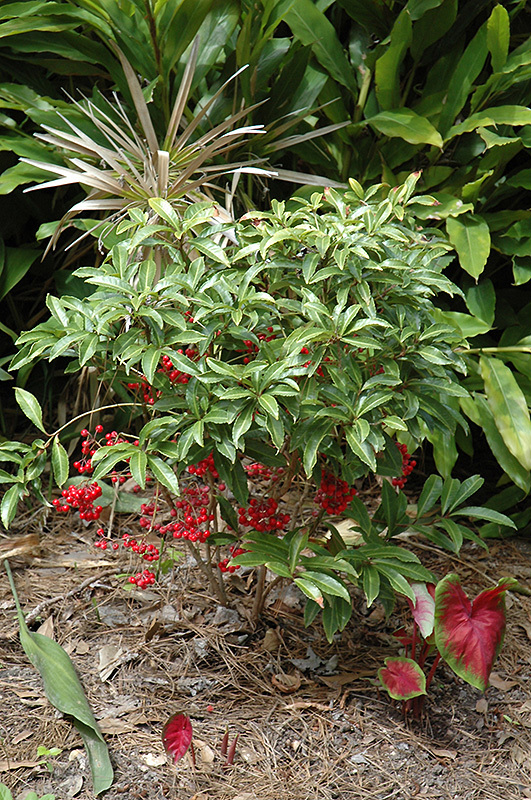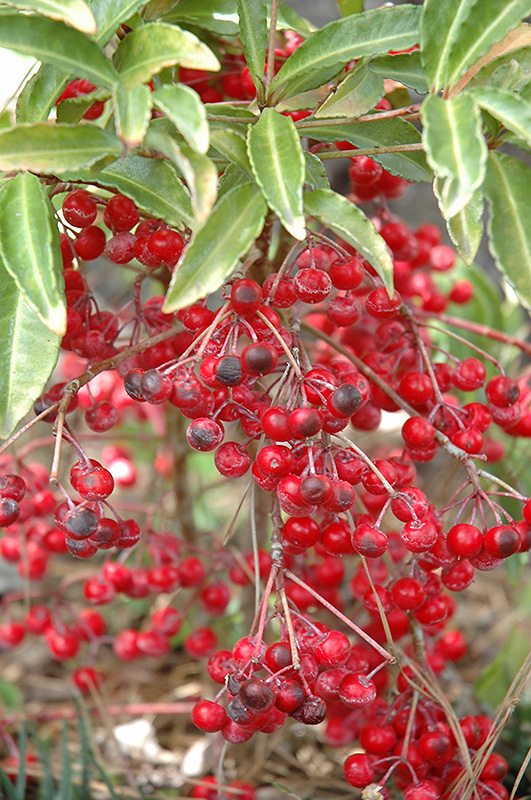Height: 4 feet
Spread: 3 feet
Sunlight:
![]()
![]()
Hardiness Zone: 8b
Other Names: Christmas Berry, Spice Berry, Coralberry
Description:
A beautiful accent shrub adorned with frothy upright panicles of small pink flowers in early summer; stunning clusters of bright red berries follow, and persist into winter; invasive in warm climates; needs full sun and well-drained soil
Ornamental Features
Coral Berry features dainty clusters of pink bell-shaped flowers with white edges at the ends of the branches in mid spring. It features an abundance of magnificent red berries in mid fall. It has dark green evergreen foliage. The glossy pointy leaves remain dark green throughout the winter.
Landscape Attributes
Coral Berry is a dense multi-stemmed evergreen shrub with an upright spreading habit of growth. Its relatively fine texture sets it apart from other landscape plants with less refined foliage.
This shrub will require occasional maintenance and upkeep, and is best pruned in late winter once the threat of extreme cold has passed. It is a good choice for attracting birds to your yard. Gardeners should be aware of the following characteristic(s) that may warrant special consideration;
- Invasive
Coral Berry is recommended for the following landscape applications;
- Mass Planting
- Hedges/Screening
- General Garden Use
Planting & Growing
Coral Berry will grow to be about 4 feet tall at maturity, with a spread of 3 feet. It has a low canopy. It grows at a medium rate, and under ideal conditions can be expected to live for 40 years or more.
This shrub does best in full sun to partial shade. It does best in average to evenly moist conditions, but will not tolerate standing water. It is particular about its soil conditions, with a strong preference for rich, acidic soils. It is somewhat tolerant of urban pollution. This species is not originally from North America.
A NetPS Plant Finder tool



